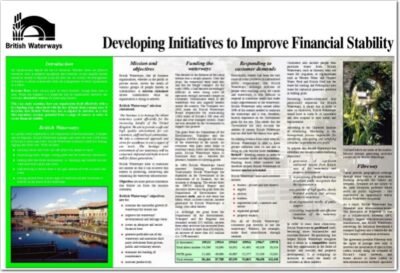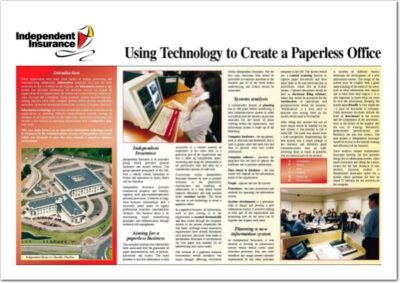Strategic procurement is a comprehensive approach to acquiring goods and services that aligns with an organisation’s long-term goals and objectives. Unlike traditional procurement, which often focuses on short-term cost savings and transactional relationships, strategic procurement emphasises the importance of building partnerships with suppliers and integrating procurement strategies into the overall business strategy. This approach requires a deep understanding of market dynamics, supplier capabilities, and the internal needs of the organisation.
By adopting a strategic mindset, organisations can leverage procurement as a key driver of value creation, innovation, and competitive advantage. At its core, strategic procurement involves a systematic analysis of the entire supply chain, from sourcing raw materials to delivering finished products. This entails not only evaluating suppliers based on price but also considering factors such as quality, reliability, sustainability, and technological capabilities.
The goal is to create a procurement strategy that not only meets immediate operational needs but also supports the organisation’s long-term vision. This holistic view allows organisations to anticipate market changes, mitigate risks, and respond proactively to evolving customer demands.
Summary
- Strategic procurement involves the systematic process of analysing and managing the supply chain to achieve long-term business goals.
- Strategic procurement is important as it helps organisations reduce costs, improve quality, and mitigate risks in their supply chain operations.
- Key components of strategic procurement include supplier relationship management, risk management, and strategic sourcing.
- Benefits of strategic procurement include cost savings, improved supplier relationships, and increased efficiency in the supply chain.
- The strategic procurement process involves strategic planning, sourcing, negotiation, and supplier performance management.
The Importance of Strategic Procurement
Unlocking Innovation and Efficiency
By fostering strong relationships with suppliers and engaging in collaborative planning, organisations can unlock new opportunities for innovation and efficiency. This collaborative approach enables businesses to tap into the expertise of their suppliers, leading to improved product development and enhanced service delivery.
Risk Management in a Turbulent Era
Moreover, strategic procurement plays a crucial role in risk management. In an era marked by global supply chain disruptions, geopolitical uncertainties, and environmental challenges, organisations must be agile and resilient. A strategic procurement framework allows businesses to identify potential risks in their supply chains and develop contingency plans to mitigate them.
Safeguarding Operations and Positioning for Growth
For instance, diversifying the supplier base or investing in local sourcing can help organisations reduce their vulnerability to external shocks. By prioritising strategic procurement, organisations can not only safeguard their operations but also position themselves for sustainable growth in an unpredictable landscape.
Key Components of Strategic Procurement
Several key components underpin an effective strategic procurement framework. First and foremost is supplier relationship management (SRM), which focuses on building long-term partnerships with suppliers rather than merely transactional interactions. Effective SRM involves regular communication, performance evaluations, and joint problem-solving initiatives.
By fostering trust and collaboration, organisations can enhance supplier performance and drive mutual benefits. Another critical component is data-driven decision-making. In the age of big data, organisations have access to vast amounts of information that can inform procurement strategies.
Analysing data related to supplier performance, market trends, and internal consumption patterns enables organisations to make informed decisions that align with their strategic objectives. For example, predictive analytics can help organisations forecast demand more accurately, allowing them to optimise inventory levels and reduce carrying costs. Additionally, sustainability has become an integral part of strategic procurement.
As consumers increasingly demand environmentally responsible products and services, organisations must consider the sustainability practices of their suppliers. This includes evaluating suppliers’ environmental impact, ethical sourcing practices, and social responsibility initiatives. By prioritising sustainability in procurement decisions, organisations can enhance their brand reputation while contributing to broader societal goals.
Benefits of Strategic Procurement
The benefits of adopting a strategic procurement approach are manifold and can significantly impact an organisation’s bottom line. One of the most immediate advantages is cost savings. By leveraging strategic sourcing techniques such as competitive bidding and volume consolidation, organisations can negotiate better terms with suppliers and achieve significant reductions in procurement costs.
Furthermore, strategic procurement enables organisations to identify opportunities for process improvements that can lead to additional savings. Beyond cost savings, strategic procurement fosters innovation within organisations. By collaborating closely with suppliers, businesses can gain access to new technologies, materials, and ideas that can enhance product development and service delivery.
For instance, automotive manufacturers often work with suppliers to co-develop new components that improve vehicle performance or reduce weight. This collaborative innovation not only enhances product offerings but also strengthens the competitive position of the organisation in the marketplace. Moreover, strategic procurement contributes to enhanced operational efficiency.
By streamlining procurement processes and integrating them with other business functions such as finance and operations, organisations can reduce lead times and improve responsiveness to market changes. This agility allows businesses to adapt quickly to customer demands and seize new market opportunities as they arise.
Strategic Procurement Process
The strategic procurement process typically involves several key stages that guide organisations from identifying needs to managing supplier relationships effectively. The first stage is needs assessment, where organisations evaluate their requirements based on current and future business objectives. This involves engaging stakeholders across various departments to ensure that procurement strategies align with organisational goals.
Once needs are identified, the next step is market analysis. This stage involves researching potential suppliers, assessing their capabilities, and understanding market trends that may impact procurement decisions. By gathering comprehensive data on suppliers’ strengths and weaknesses, organisations can make informed choices about whom to partner with.
Following market analysis is the sourcing strategy development phase. Here, organisations determine the best approach for engaging suppliers—whether through competitive bidding, direct negotiations, or collaborative partnerships. The chosen strategy should reflect the organisation’s priorities regarding cost, quality, innovation, and sustainability.
After selecting suppliers, the implementation phase begins. This involves formalising contracts, establishing performance metrics, and initiating supplier onboarding processes. Effective communication during this phase is crucial to ensure that both parties understand expectations and deliverables.
Finally, ongoing supplier relationship management is essential for maintaining strong partnerships over time. Regular performance reviews, feedback sessions, and joint improvement initiatives help foster collaboration and drive continuous improvement in supplier performance.
Strategic Procurement vs Traditional Procurement
The distinction between strategic procurement and traditional procurement lies primarily in their focus and approach. Traditional procurement often operates on a transactional basis, where the primary goal is to secure goods or services at the lowest possible price without considering long-term implications or supplier relationships. This approach can lead to short-sighted decisions that may compromise quality or service levels in favour of immediate cost savings.
In contrast, strategic procurement takes a more holistic view by integrating procurement activities into the broader organisational strategy. It prioritises long-term value creation over short-term gains by fostering collaborative relationships with suppliers and aligning procurement decisions with business objectives. This shift in focus allows organisations to leverage supplier expertise for innovation while ensuring that procurement practices are sustainable and responsible.
Furthermore, traditional procurement often relies heavily on manual processes and limited data analysis, which can hinder decision-making efficiency. Strategic procurement embraces technology and data analytics to drive informed decisions based on real-time insights into market conditions and supplier performance. This technological integration enhances agility and responsiveness in a rapidly changing business environment.
Implementing Strategic Procurement in Your Organisation
Implementing strategic procurement within an organisation requires careful planning and commitment from leadership across all levels. The first step is to establish a clear vision for what strategic procurement means for the organisation and how it aligns with overall business objectives. This vision should be communicated effectively throughout the organisation to ensure buy-in from all stakeholders.
Next, organisations should assess their current procurement practices to identify areas for improvement. This may involve conducting a thorough analysis of existing processes, supplier relationships, and performance metrics. Engaging cross-functional teams in this assessment can provide valuable insights into how procurement impacts various aspects of the business.
Once areas for improvement are identified, organisations can develop a roadmap for implementing strategic procurement initiatives. This roadmap should outline specific goals, timelines, and responsibilities for each phase of implementation. Training programmes may also be necessary to equip procurement teams with the skills needed to navigate this new approach effectively.
Additionally, leveraging technology is crucial for successful implementation. Investing in procurement software solutions that facilitate data analysis, supplier management, and process automation can significantly enhance efficiency and effectiveness in strategic procurement efforts.
Future Trends in Strategic Procurement
As businesses continue to evolve in response to technological advancements and changing market dynamics, several trends are shaping the future of strategic procurement. One prominent trend is the increasing emphasis on digital transformation within procurement functions. Organisations are adopting advanced technologies such as artificial intelligence (AI), machine learning (ML), and blockchain to streamline processes, enhance decision-making capabilities, and improve transparency across supply chains.
Another significant trend is the growing focus on sustainability and ethical sourcing practices. As consumers become more environmentally conscious, organisations are prioritising sustainable procurement strategies that minimise environmental impact while promoting social responsibility within their supply chains. This shift not only meets consumer expectations but also aligns with regulatory requirements aimed at promoting sustainable business practices.
Furthermore, the rise of globalisation has led to increased complexity in supply chains, necessitating greater agility in procurement strategies. Organisations are exploring nearshoring options to mitigate risks associated with global supply chain disruptions while maintaining cost-effectiveness. Lastly, collaboration will continue to play a pivotal role in shaping the future of strategic procurement.
As businesses recognise the value of partnerships with suppliers for driving innovation and enhancing competitiveness, collaborative approaches will become increasingly prevalent in procurement strategies moving forward. In summary, strategic procurement represents a paradigm shift from traditional transactional approaches towards a more integrated and value-driven methodology that aligns closely with organisational goals while fostering innovation and sustainability within supply chains.
Strategic procurement is a crucial aspect of business operations, as highlighted in a related article on how cloud technology is changing cybersecurity. This article discusses the importance of adapting to technological advancements in order to enhance security measures within an organisation. By incorporating cloud technology into procurement processes, businesses can streamline operations and improve efficiency. Embracing lifelong learning, as explored in another article on how lifelong learning can enhance your career, is also essential for procurement professionals to stay updated with industry trends and best practices.
FAQs
What is strategic procurement?
Strategic procurement is the process of planning, implementing, and managing the sourcing and supply of goods, services, and materials in a way that supports an organization’s overall business objectives.
What is the goal of strategic procurement?
The goal of strategic procurement is to optimize the value of purchases made by an organization, by ensuring that the right goods and services are obtained at the right time, in the right quantity, and at the right price.
How does strategic procurement differ from traditional procurement?
Strategic procurement takes a more holistic and long-term approach, focusing on building relationships with suppliers, managing risks, and aligning procurement activities with the organization’s overall strategic goals. Traditional procurement tends to be more transactional and focused on immediate cost savings.
What are the key components of strategic procurement?
Key components of strategic procurement include supplier relationship management, risk management, market analysis, cost management, and performance measurement.
Why is strategic procurement important for businesses?
Strategic procurement can help businesses reduce costs, improve quality, mitigate risks, and gain a competitive advantage in the marketplace. It also enables businesses to align their procurement activities with their overall business strategy.
 Developing initiatives to improve financial stability (PDF)
Developing initiatives to improve financial stability (PDF)  Recruitment and selection at Enterprise Rent-A-Car (MP3)
Recruitment and selection at Enterprise Rent-A-Car (MP3)  Using technology to create a paperless office (PDF)
Using technology to create a paperless office (PDF) 

